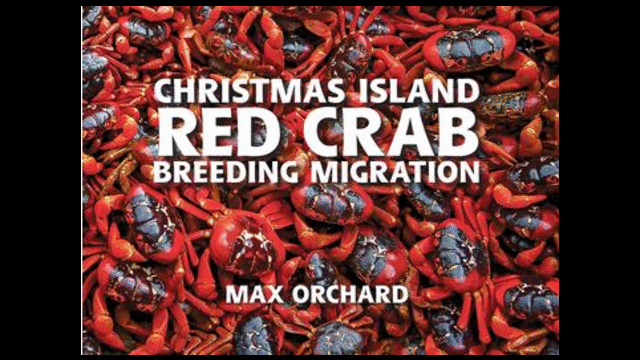
Crabs of Christmas Island



Red crab breeding migration
Page under construction
Possible spawning commencement dates
for 2020/21 breeding migrations are;
-
spawning to commence around 11 October, 10 November or 9 December.
-
Spawning on any or all of these dates is dependant on wet season rains establishing so that the crabs are able to complete a downward migration, mating, egg production and brooding so that the females can commence releasing eggs on these particular dates in the lunar phase.
New book !!!
We are pleased to announce that a new book about Christmas Island Red crabs is now available
CHRISTMAS ISLAND RED CRAB BREEDING MIGRATION
An eye-catching book that superbly describes and illustrates with spectacular images one of nature's most amazing animal migrations. Every year tens of millions of Christmas Island's endemic Red crabs travel from the rainforest to the shore and return on an annual breeding migration that is acknowledged as one of the most spectacular natural history events on Earth. Follow the crabs on their breeding migration and learn about all aspects of this amazing event.



You can purchase the book from the author by contacting him at
crabsofchristmasisland@gmail.com
or from
Christmas Island Post Office
cipost@cipost.cx
or from
Christmas Island Tourism Association
cita@christmas.net.au

A selection of page spreads from the book
Check the book out here
https://indd.adobe.com/view/2b768646-bb41-4b54-a84b-a5531d3c640aHeading 5
Amazing annual breeding migration of the Christmas Island red crab
Every year, at the beginning of the wet season (usually during October / November), most adult Christmas Island red crabs suddenly begin a spectacular migration from the forest to the coast, to mate and for the females to then release eggs into the sea. This annual breeding migration has been described by Sir David Attenborough as one the 10 greatest natural wonders on Earth. The wet season rains provide moist and overcast conditions to sustain the crabs after they have left the safety of their burrow to make their often long and difficult journey to and from the coast to mate and spawn.
Observation over time has shown that, while the commencement of the breeding migration clearly depends on establishment of wet season rains, the commencement is not, as was thought until recently, necessarily also synchronised with the lunar cycle. Rather, it is that fertilization of the eggs must occur at a crucial time in the lunar cycle and it is the date on which the eggs are cast into the ocean (spawning) that is fixed to conditions during a particular lunar phase, i.e., a pre-dawn receding high tide during the last quarter moon phase.
The crabs seem to know how far they have to travel, how long it will take them to get to the ocean and whether or not they have sufficient time to be able to complete the downward migration, mate and brood eggs ready for spawning at the optimum time during the last quarter moon phase. When the rains arrive late and the timing is challenging for them to be able to meet a spawning date they will migrate rapidly providing weather conditions remain constantly suitable, or if the rains arrive early and are consistent, the crabs will instead migrate at a comparatively leisurely pace to the coast, often stopping to eat and drink on the way. If there is not enough time for them to be able to meet the next spawning date, even though the weather may be suitable, they will
delay the start of their migration and remain at their burrow till the following month.
The breeding migration comprises a synchronised sequence of actions by the red crabs; one action following on from another only when the preceding one has been accomplished. Should one sequence be delayed for any reason, then the following actions are necessarily delayed.
The sequences of a complete and successful red crab breeding migration are; the downward migration, dipping in the sea, digging of mating burrows, mating, males dipping and males return migration, females brooding eggs in burrows, females emerging from burrows with eggs, gravid females dipping in sea, females spawning, females return migration, larval development in ocean, emergence of baby crabs from ocean, baby crabs migrating inland and settling in forest.
Following the onset of wet season rains the urge to migrate is triggered. The crabs run the risk of dehydration after they leave their burrows if the humidity does not remain up around 100% for the entire period of the migration . The male crabs farthest from the coast become active first, and begin their migration. Their activity stirs the females into action and the males are progressively joined by more and more females as they move to the coast so that male and female crabs arrive at the ocean at the same time. Depending on the combination of available time to be able to meet a spawning date and/or prevailing weather, the main downward migration can be a frantic dash or a leisurely stroll. Some years the downward migration may be accomplished in around five days while in other years it has taken nearly three weeks.
To view videos of the red crab migration, filmed by the BBC Natural History Unit, click here




Red crabs migrate from the forest to the coast
Male red crabs dig and defend burrows and mate with females
Gravid female red crabs release their eggs into the sea
Masses of juvenile red crabs emerge from the sea



